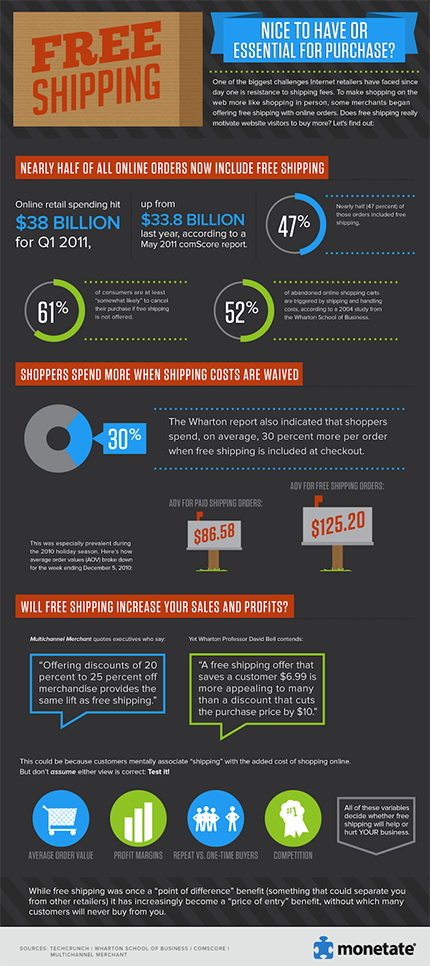
 One thing that all successful online businesses know is that a sales transaction isn’t complete once the money is collected – it’s complete when the customer’s package arrives safely in their hands. While many online retailers concentrate on the look of their online store and the process for completing the sale, it’s those that employ key ecommerce shipping strategies that will eventually see a bigger boost in sales, repeat customers and profit.
One thing that all successful online businesses know is that a sales transaction isn’t complete once the money is collected – it’s complete when the customer’s package arrives safely in their hands. While many online retailers concentrate on the look of their online store and the process for completing the sale, it’s those that employ key ecommerce shipping strategies that will eventually see a bigger boost in sales, repeat customers and profit.
I recently had the opportunity to speak with John Lawson, CEO of ColderIce Media and author of “Kick Ass Social Commerce for E-Preneurs”, and he shared with me three key shipping strategies that every ecommerce business should take note of:
1. It’s About the Whole Package – Not Just What’s In It
Your customer has made their purchase and they’ve left your online store. Your brand is now out of sight and out of mind, right? Wrong! The final contact your brand has with your customer is the package that you ship to them with their goods safely inside. The look of that package and the care that goes in to packaging the goods inside will be the last impression on the customer and the one that they will most likely use to form an overall opinion of your company.
“Shipping is the most repeatable portion of an ecommerce business, but in most every case it’s the only ‘physical’ contact the customer has with you,” says Lawson. “The most important moment of the transaction is when the customer opens the package. ‘Wowing’ them is the key in converting them into a loyal customer who not only continues to buy from you but is also happy to tell others about your products and service.”
2. Constantly Review Your shipping Costs
Today more than ever, retail businesses are dealing with an overwhelming amount of competition. The consumer’s ability to find products at the click of a button and compare prices instantly across hundreds of retailers forces every online (and brick and mortar) business to find ways to keep their costs as low as possible. Packaging/shipping is an area in which prices will constantly fluctuate, so it’s important to constantly review your shipping costs.
“A five cent savings on a box or a packing envelope can quickly add up and turn into significant savings,” commented Lawson. “It’s important that you constantly review all your shipping costs (shipping technology, packaging, carriers, etc.) and reach out to vendors to see all options that are available to you.”
While committing to one carrier or vendor can sometimes provide additional savings in the form of discounts, keep in mind that their business is as competitive as yours, so compare carriers’ rates and specials to ensure that you are capitalizing on the best prices available.
Lawson also advises that you look at all shipping services that are available and choose those that offer you greater savings, but don’t compromise your quality and brand. For instance, explore USPS shipping services such as flat rate padded envelopes and shipping boxes.
3. Free Shipping: Pitfall or Profit?
Free shipping is always an attractive option to consumers and one that can sometimes make or break the sale. The infographic below from Monetate demonstrates the impact that free shipping can have on sales.
“While free shipping is nice to offer and sometimes a must to remain competitive, online retailers need to know the break-even point before they can offer it or else they will lose money,” said Lawson. “If your average order volume is $25 and you offer free shipping at $50, not many consumers will find value in doubling their order to save on shipping. Instead, offer free shipping at $30. Most consumers won’t bock at spending an additional $5 (and often times it becomes more than $5) to save on shipping. You need to dangle the carrot and play with it a bit to see what customers want and what fits into your costing structure so you aren’t losing money.”
Running an ecommerce business can be challenging, but by employing smart strategies and making intelligent buying and selling decisions, your online business can not only survive, but thrive in today’s competitive online markets.




